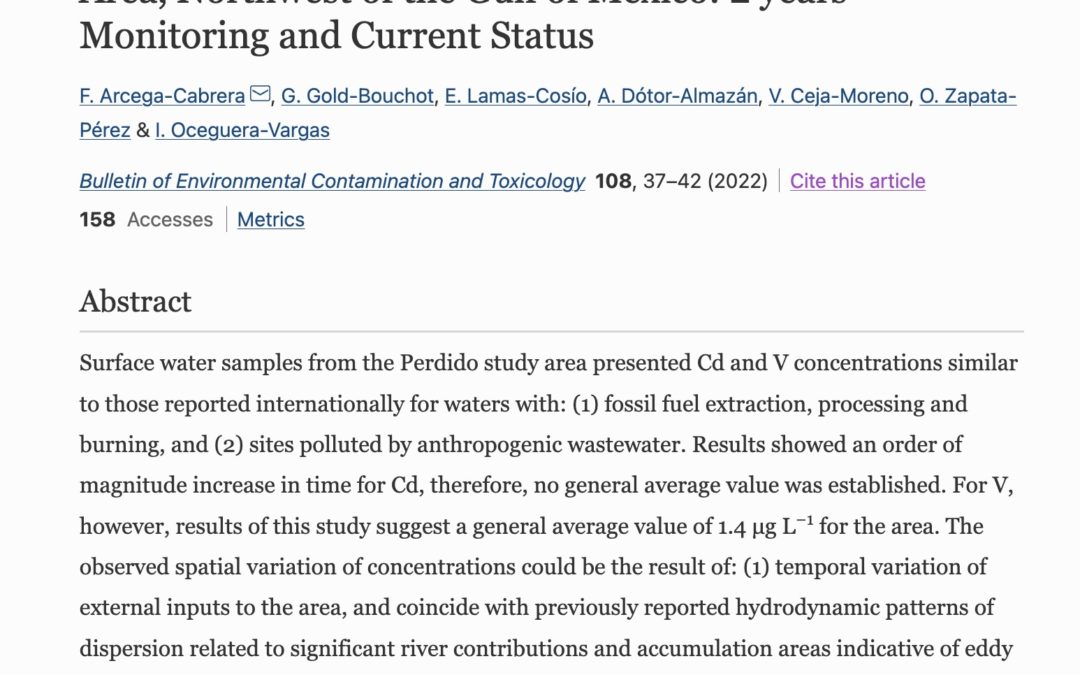Authors: F. Arcega-Cabrera, G. Gold-Bouchot, E. Lamas-Cosío, A. Dótor-Almazán, V. Ceja-Moreno, O. Zapata-Pérez & I. Oceguera-Vargas
https://doi.org/10.1007/s00128-021-03212-9
Abstract
Surface water samples from the Perdido study area presented Cd and V concentrations similar to those reported internationally for waters with: (1) fossil fuel extraction, processing and burning, and (2) sites polluted by anthropogenic wastewater. Results showed an order of magnitude increase in time for Cd, therefore, no general average value was established. For V, however, results of this study suggest a general average value of 1.4 µg L−1 for the area. The observed spatial variation of concentrations could be the result of: (1) temporal variation of external inputs to the area, and coincide with previously reported hydrodynamic patterns of dispersion related to significant river contributions and accumulation areas indicative of eddy circulation or fronts. The Perdido area showed Cd and V concentrations in surface water reflective of anthropogenic impacts, while its spatial and temporal variation could depend significantly on the hydrodynamics of the area.
Keywords: Cadmium, Vanadium, Seawater, Metal variation, Perdido foldbelt, Gulf of Mexico


Recent Comments